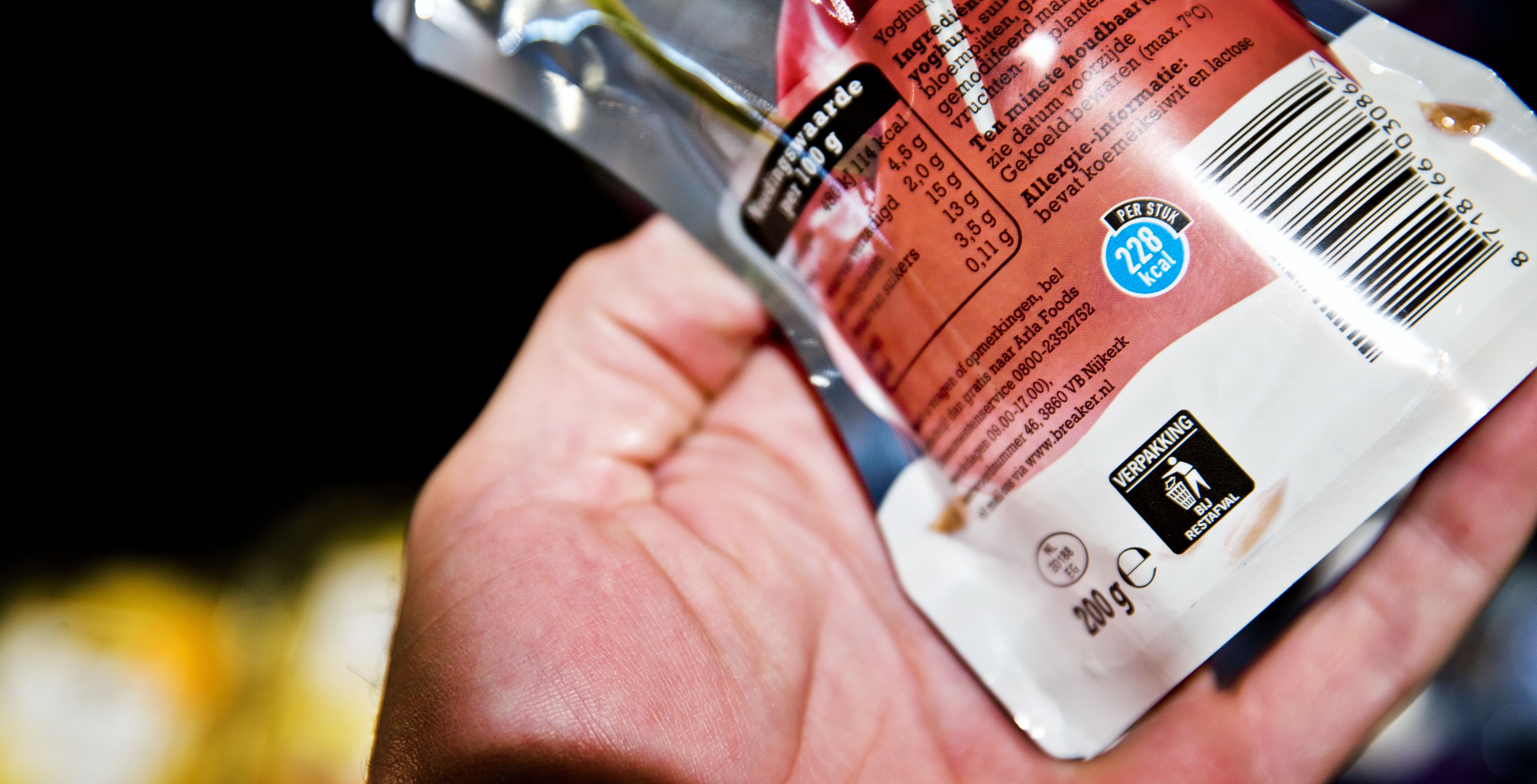Information on packaging
Packaging plays an important role in communicating with consumers by informing the consumer of the product, its ingredients, its shelf life, and its provenance. Pieces of packaging often feature various symbols, which each have their own function. One symbol may relate to the contents of the packaging, for instance, whereas another symbol may say something about the packaging itself. These symbols provide information about the origins of the packaging material or about the waste phase to tell consumers how to dispose of the packaging properly. This dossier provides more information about the various symbols that say something about packaging.
Origin of packaging material
Some symbols found on packaging inform consumers about the source of the material used. These are often official labels, such as the EU Ecolabel, the Milieukeur symbol, or the logo of the Forest Stewardship Council (FSC). The goal of these symbols is to encourage sustainable production and consumption. For an overview of commonly used labels, please consult KIDV’s fact sheet on ‘Symbols on packaging’ (only available in Dutch). For a complete overview of all symbols and quality labels broken down by category, please refer to the Quality label guide (only available in Dutch). More information on when a company can use evironmental claims on packaging can be found in the 'factsheet Environmental claims'.
Waste stage of packaging
There are also symbols that provide information on how packaging can best be disposed of or how it is processed in the waste phase. Over the years, consumers have been given more and more ways to separate waste, but this has also made throwing away packaging considerably more difficult. Consumers frequently find themselves asking what goes where. Research has shown that there is broad-based support for waste separation among consumers, provided they are told how to dispose of their waste properly.
The Disposal guide, or Weggooiwijzer in Dutch, helps them do just that. The Disposal guide is based on a series of symbols that feature on packaging to indicate which category or categories the various components of a piece of packaging belong to, showing customers how to properly dispose of the packaging at a glance.
By using the Waste guide symbols, you can contribute to optimising the recycling process whilst showing that reuse is an important issue for you. Disposing of packaging in the correct way really helps.
Would you like to know which disposal logos are used in different European countries? Then please have a look at the international overview of disposal logos.

Other information on packaging
Other symbols say nothing about the origin or waste phase of the packaging, but convey a different message, such as Packaging Identification Codes (only available in Dutch). These symbols make it possible to identify materials and distinguish different types of plastics, for instance. Another example is the Grüne Punkt symbol, which shows that a foreign producer paid to have the packaging processed in the waste phase.
A closer look
- Biodegradable plastic
In some cases, there is confusion about the use of the so-called Seedling logo or OK Compost logo. As a rule, these symbols can be printed on packaging that meet the requirements of the European Standard for biodegradable packaging (EN-13432), which means that they are compostable under controlled conditions. However, in accordance with the National Waste Management Plan 3 (LAP3), biodegradable plastics are currently not allowed to be grouped with organic waste in the Netherlands, not even if they have a Seedling logo or the OK Compost logo. On top of that, biodegradable plastic packaging should not be grouped with plastic waste streams either, as it may disrupt the recycling process. For more information about biodegradable plastic, click here.





